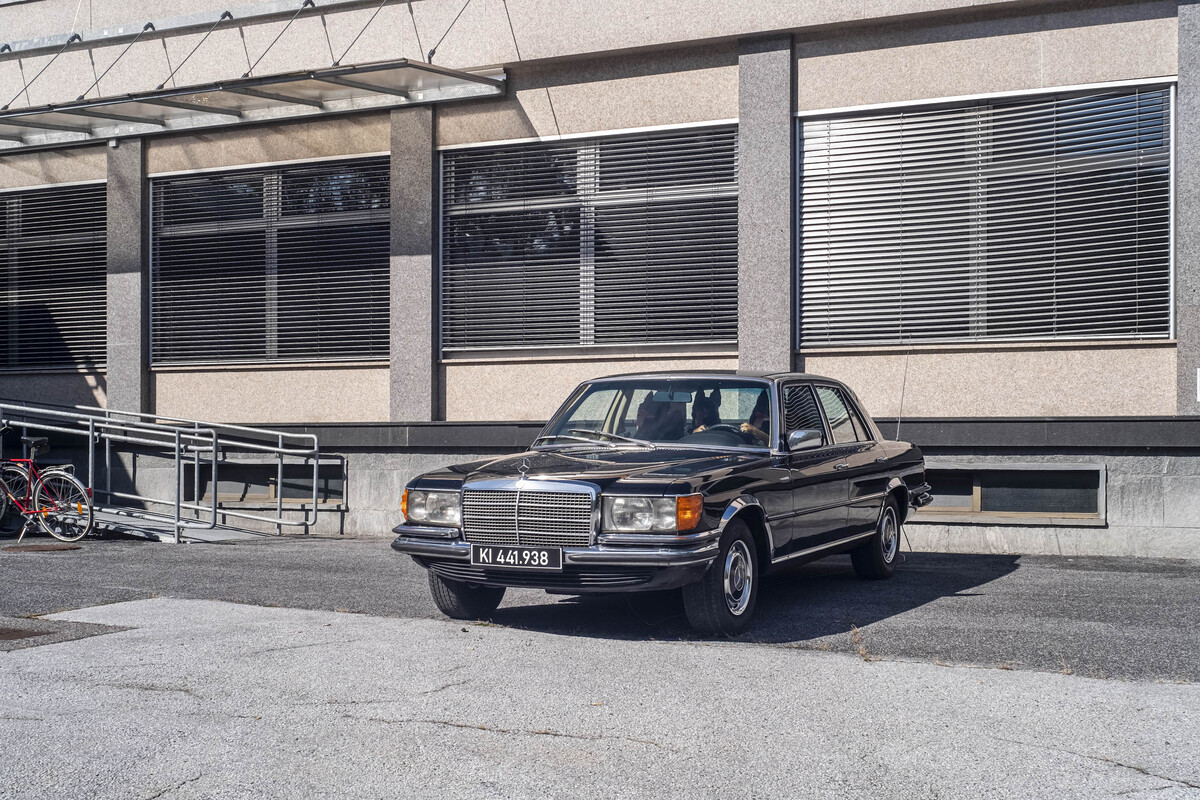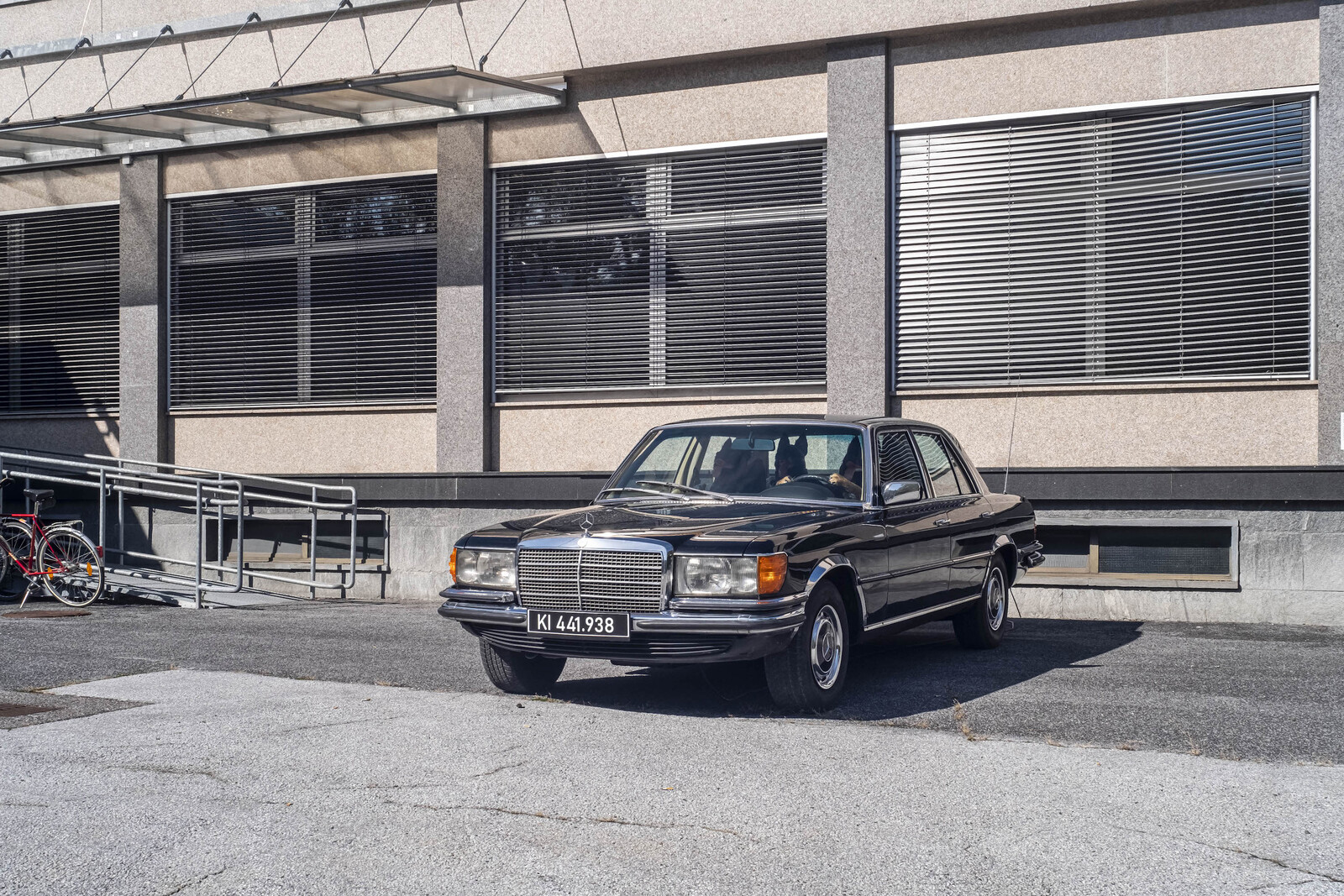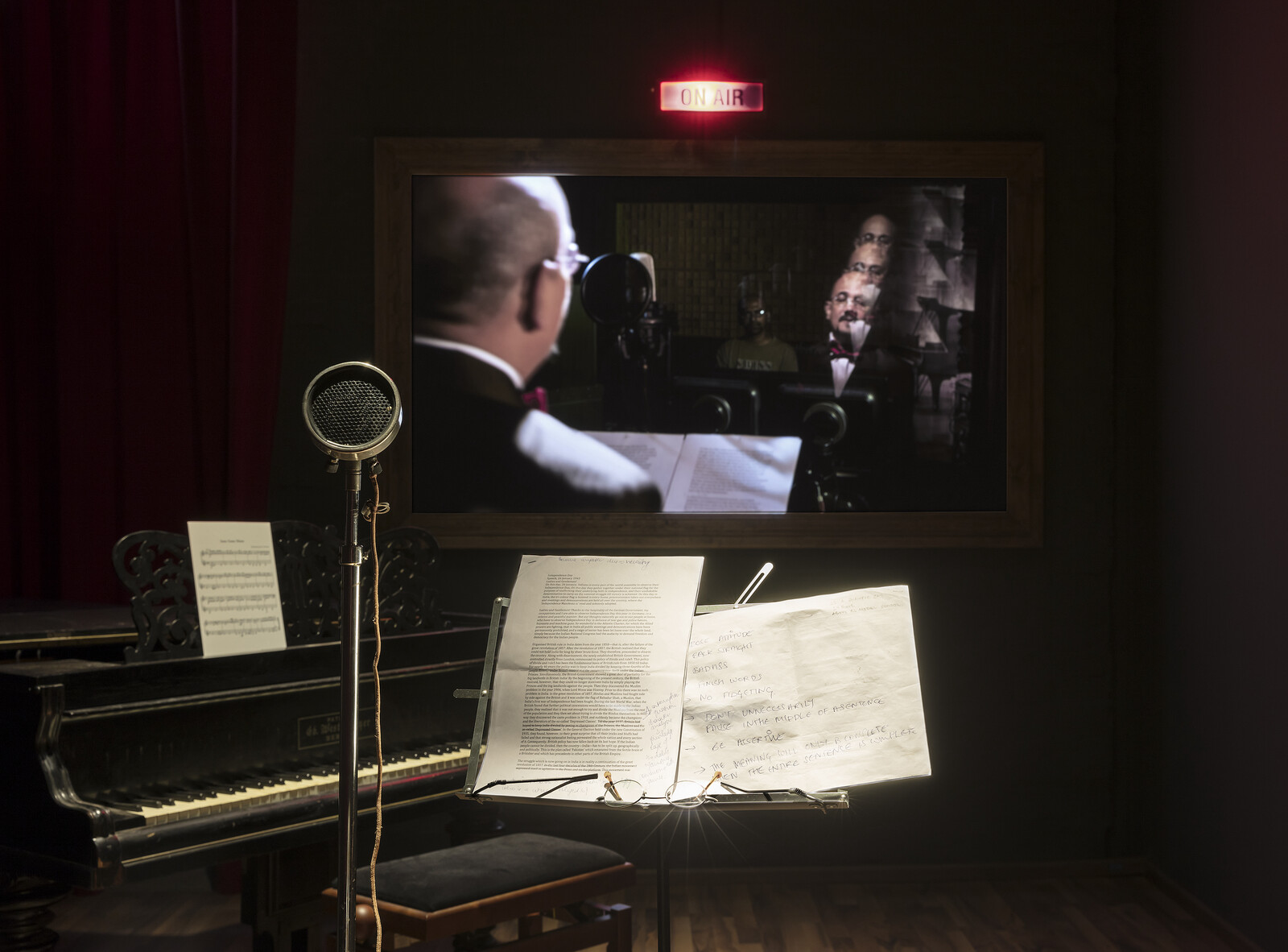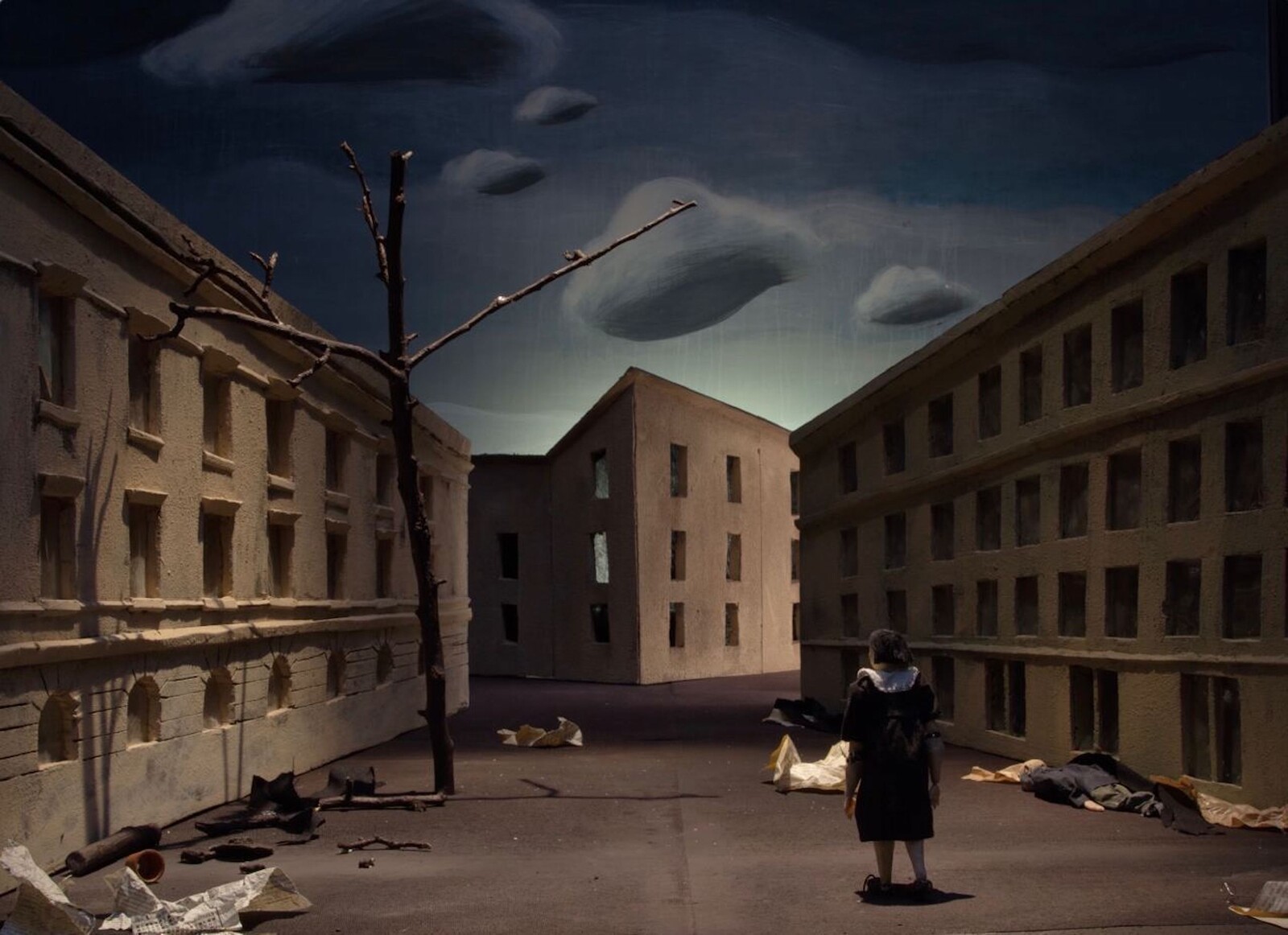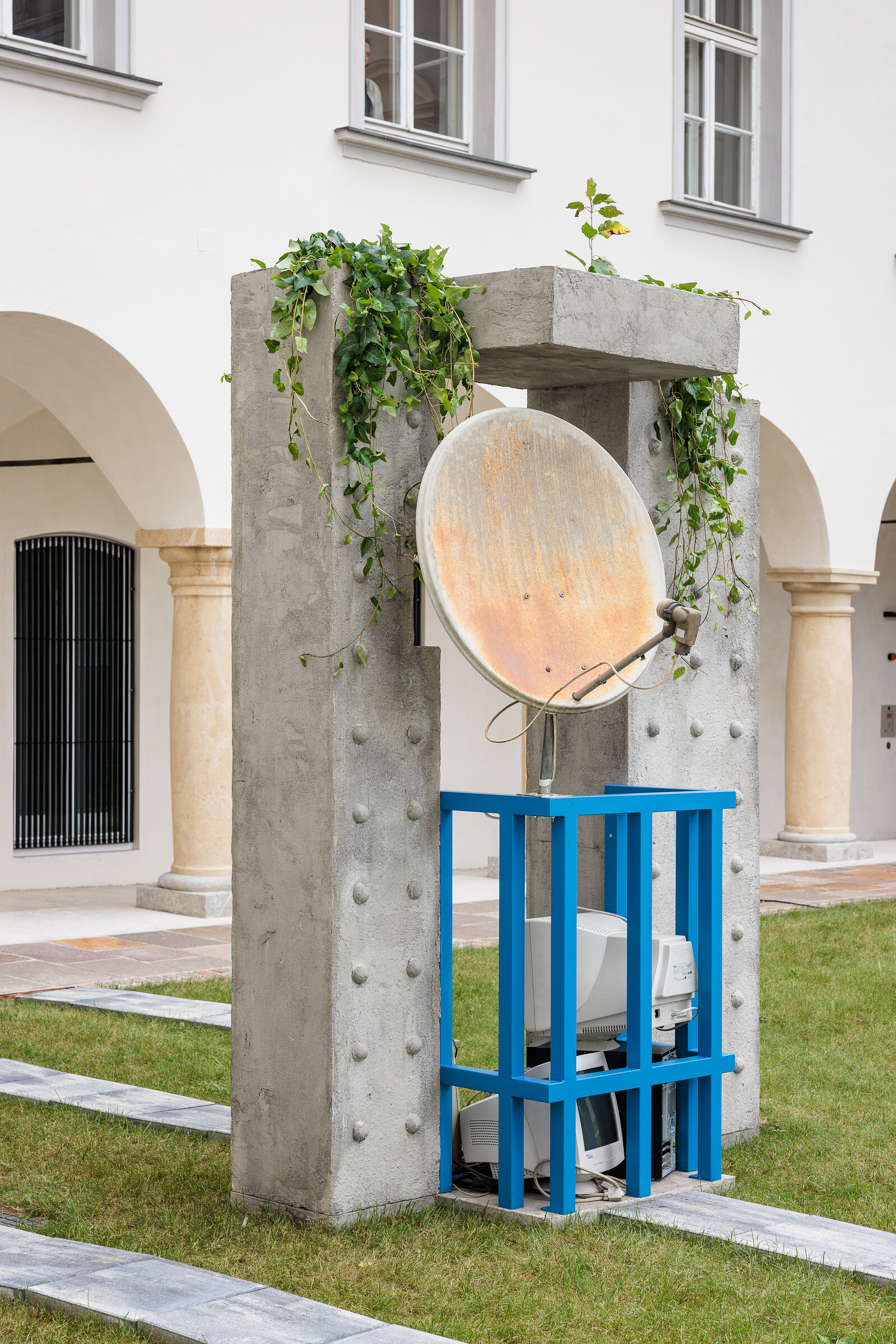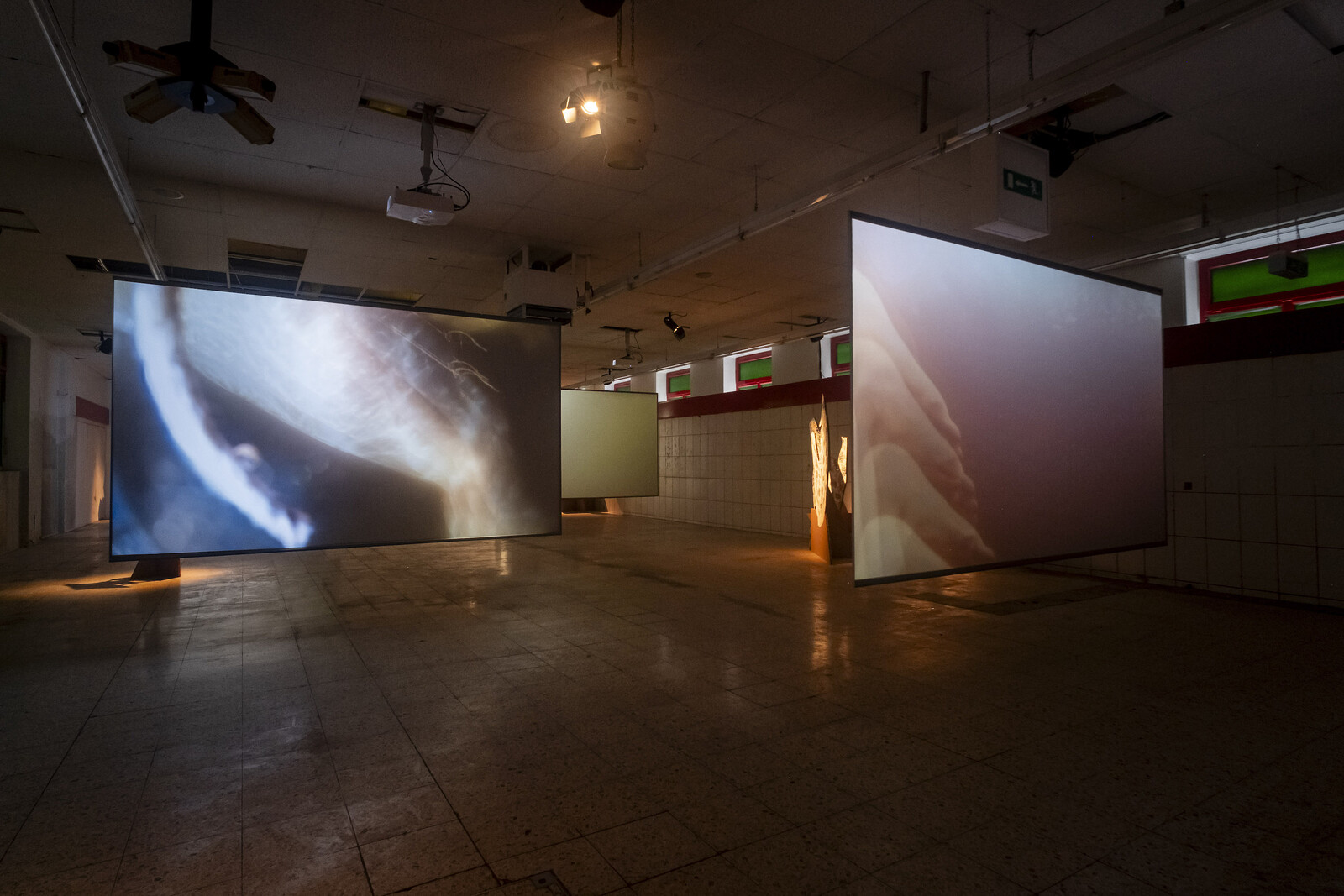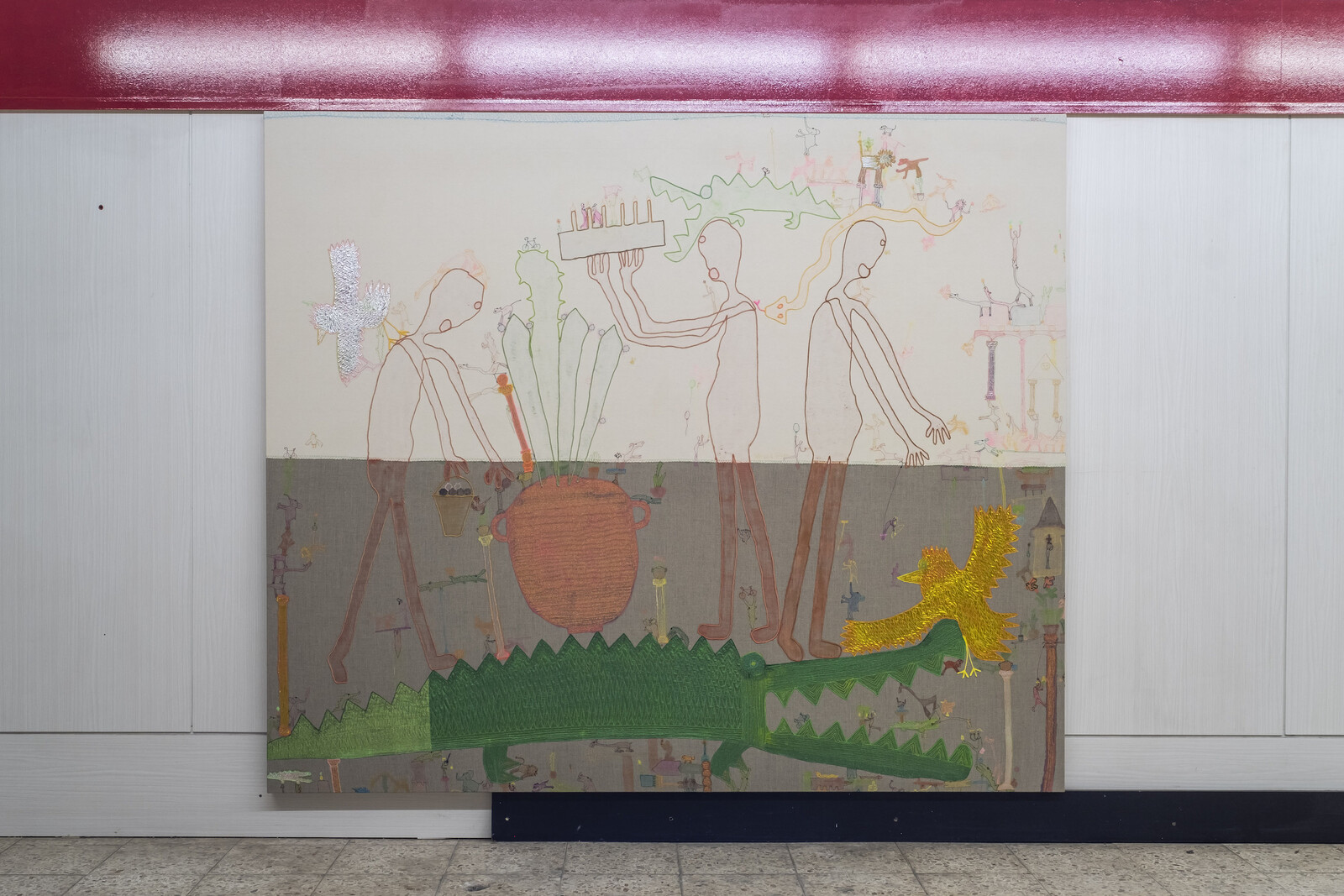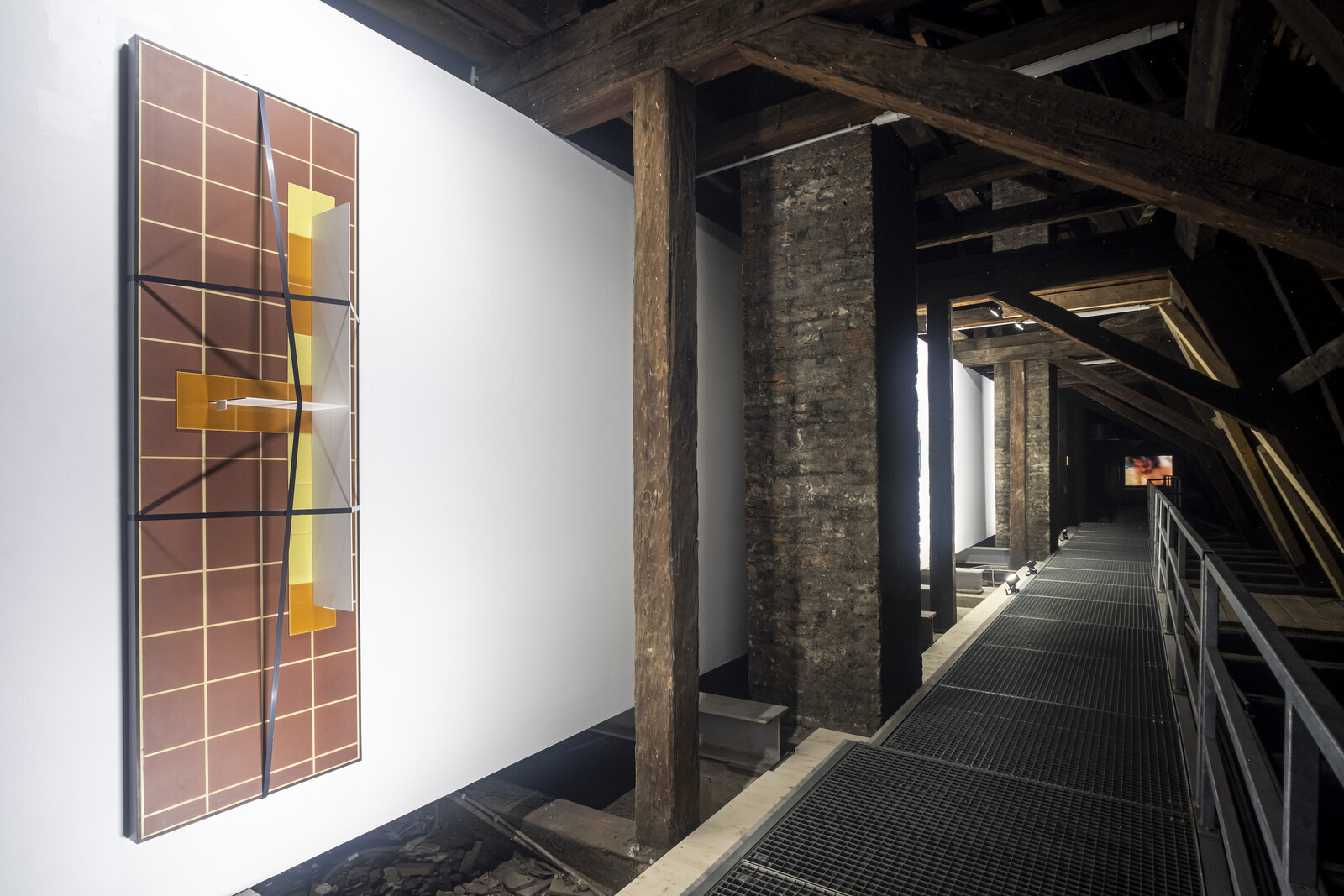In the opening speech for “Humans and Demons,” her sixth edition as curator of Europe’s longest-standing annual contemporary art festival, Ekaterina Degot stated that the exhibition “is not about good and evil” but “status quo and evil.” This distinction informs the four main exhibition sites and programs deployed through the city, organized according to the trajectories of three historical figures—and one object—to live or pass through Graz during or after World War II. These are represented in each venue by a curatorial research installation: a collection of records owned by Nazi officer and jazz enthusiast Dietrich Schulz-Köhn, alias Dr. Jazz (1912–99); the personal archive of physicist Stefan Marinov (1931–97); an AI rendering of the Zürich-born Brazilian artist Mira Schendel (1919–88); and a copy of a 1925 postcard showing pacifists holding a banner on which the word “Friede” (Peace) was later changed to “Frieda” to avoid Nazi persecution.
This year’s Steirischer herbst takes place against the backdrop of Russia’s ongoing invasion of Ukraine, among the many lessons of which is that we never really left the twentieth century. In that context, and in such a historically saturated exhibition, the above installations are a brilliant move. They free participating artists from archival work, allowing them instead to enact, role-play, speculate, and perform. “Demon Radio,” staged in a former call center built on the lot of a paramilitary facility erected by the Nazis after the Anschluss, is one example. Upon arriving at the building, one encounters a parked Mercedes holding four German shepherds in uniform. At once menacing and ridiculous, the car radio of Die Vier von der Tankstelle [The Four from the Filling Station] (2023), by Jos de Gruyter and Harald Thys, plays a recording of Beethoven’s Seventh made in Austria in 1943. Like the music playing in Beethoven’s mind (by 1812, when he completed the piece, he was almost totally deaf), it is both direct and an echo, a historical document and a haunting exercise. Inside, Thys and de Gruyter show terrariums filled with Remedios Varo-like human-faced reptile figurines in combinatory interactions resembling a nightmarish natural history museum scene.
Video installations by Anna Engelhardt and Mark Cinkevich, Dani Gal, and Anton Kats offer different answers to the question what it means to on the right side of history, while Zuleikha Chaudhari’s brilliant Rehearsing Azaad Hind Radio (2018), revisits the Berlin years of Subhas Chandra Bose (1897–1945). Seeking allies in his armed struggle against the British, this Hindu nationalist delivers a pro-Nazi address in what appears to be a 1940s radio studio, complete with wood cladding, standing microphone, piano, and clock. The Modi government—as if to affirm that we are yet to extricate ourselves from the previous century—recently immortalized Bose in the form of a twenty-eight-foot-high, black granite statue in Delhi.
In “Villa Perpetuum Mobile” at Forum Stadtpark, a skewing of time and space occurs, informed by notions of free energy and perpetual motion put forth by Stefan Marinov. Through his Institute of Fundamental Physics, this dissident Bulgarian esoteric physicist, who later jumped to his death from a library staircase in the University of Graz, looked for endorsements on both sides of the Cold War. In the center of this sunlit glass palace—also home to works by Alice Creischer, Michael Stevenson, Vadim Fishkin, and Hollis Frampton—Pedro Gómez-Egaña’s playful installation The Believers (2019) depicts a domestic breakfast/work scene. Laptop, macchinetta coffee maker, candle, plate, and cutlery are cut by grooves through which four pendulums run on electromagnetic triggers, generating contradictory forces that destabilize this otherwise static setting. A physicist’s dream and a dissident’s reality.
“Submarine Frieda,” in an abandoned supermarket in the Gries district, is the most lyrical of the four exhibitions, with an almost immersive newly commissioned video and painting installation by Lucile Desamory (Untitledment, 2023) and a new painting by Graz-born Georg Haberler, (Wir sind Frieda, 2023). Thinking through the act of masquerade via the alteration of a letter on a banner in the above-mentioned 1925 postcard, both works hint at a minor manipulation that makes the political gesture a personal gathering, and the heroic anti-heroic.
Of all the exquisitely suggestive titles, “Church of Ruined Modernity,” at the Minorite Monastery and Minorite Center, speaks its intertwined pasts and present most directly. Works by Andrea Büttner, Maria Loboda, Eteri Nozadze, and Pavel Brăila are displayed across the courtyard, a hall, and the attic. In the last space Andreas Fogarasi’s newly commissioned Nine Buildings, Stripped (Vorklinik) (2023) comprises a series of readymades—or unreadymades, since they seem to point towards their own destruction—assembled from fragments of furniture and design features from a recently demolished medical building in Graz. Neatly packed together with a metal cable tie, these elegant assemblages create a corridor in the attic in which the objects’ material qualities—color, texture, shine, finish—are highlighted and recontextualized. These unreadymades draw attention to the massive post-Brutalist building in which they are displayed, itself now appearing comprised of many smaller, portable pieces and as such destined to disintegrate—to melt into air.
A newly commissioned stop-motion animation with puppets by Ukrainian artist Dana Kavelina, The Lemberg Machine (2023), takes for its title the German name for the city of Lviv (Lwów, in Polish) and tells of the pogroms that took place there in 1941. In one scene, set in a prison cell and based on the testimony of Holocaust survivor Leon Weliczker Wells, a son argues to his father that they should eat all their rationed bread immediately, rather than save half for the next day, because “in the morning we’ll be off to the firing squad.” Where the father insists that there is still hope for tomorrow, the son accepts their fate. Here, the two pose the central question of “Humans and Demons”—faced with an impossible situation, how can one do the right thing?
